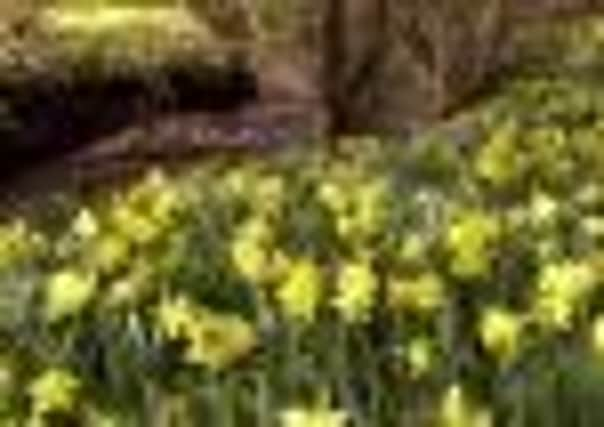Time to see the daffs but don’t eat them


One of Yorkshire’s greatest treasures lies north-west of Pickering, a long sliver of dale cutting into the North Yorks Moors massif.
Farndale is justly known for its nationally important displays of wild daffodils, which bear the wonderful scientific name of Narcissus pseudonarcissus.
Advertisement
Hide AdAdvertisement
Hide AdMost people assume that the scientific name Narcissus derives from the classical youth who fell in love with his own image.
However, this is not the case, it is from the word narce (as in narcotics), which means to numb, due to the plant’s toxic effects.
According to Cooper & Johnson Poisonous Plants in Britain and their effects on Animals and Man, daffodil contains toxic substances in all tissues.
This makes the growing parts of the plant poisonous and so not readily eaten by animals.
Advertisement
Hide AdAdvertisement
Hide AdAccording to Grieve’s herbal, the entire plant is toxic and the bulb particularly so. The flowers are mildly poisonous the toxins being emetics causing intestinal irritation; so if you are tempted to nibble on a daffodil flower, best not.
Now, hanging on the valley side woods and unimproved pastures, the flowers provide one of the greatest wildlife spectaculars.
You need to visit soon as this is a short-lived display of only a few weeks; hesitate and you’ve missed it until next year.
The valley bottom and the dale sides are criss-crossed with footpaths. They give good access to most of the local nature reserve and some areas beyond that.
Advertisement
Hide AdAdvertisement
Hide AdYou will be joining about 60,000 visitors per year to the Dale.
The valley’s linear woodlands along the river and on its flanks, enclose areas of grassland and scrub. Some of these, along with the woodlands, are of particular nature conservation interest.
The influences of limestone and other minerals enhance plant diversity and so there are rarities such as greater butterfly orchid, bird’s nest orchid and small-white orchids.
These occur alongside yellow bird’s nest, marsh helleborine, grass-of-Parnassus, bird’s-eye primrose, baneberry, herb-Paris, and globe flower.
Advertisement
Hide AdAdvertisement
Hide AdTwo important components of this rich ecological system are the formerly managed ancient woodlands, and the unimproved pastures and meadows.
In times past, women from Middlesbrough would tramp the hills to collect wild daffodils for sale in the markets, but not any more.
The online Farndale daffodil information says: The warm weather last week brought the daffies on and they are now at their best and should remain so for the next two to three weeks.
The National Park information caravan is now open daily at Low Mill as is the daffy car park.
Advertisement
Hide AdAdvertisement
Hide AdThe daffodil walk runs alongside the River Dove, for about one-and-a-half miles between Low Mill, where the North York Moors National Park has an information caravan during the daffy season, and High Mill a few hundred yards short of Church Houses.
At Low Mill, parking is available in a field for a nominal charge and there is a little road parking available around Church Houses.
On Sundays during the peak season, visitors may park in Hutton le Hole and catch the Moors Bus to Farndale.
The path between Low Mill and Church Houses is mostly made up.
Advertisement
Hide AdAdvertisement
Hide AdTwo short sections are unsurfaced through wooded parts of the walk.
Refreshments at the Daffy Caffy at High Mill and the Feversham Arms Inn at, Church House, within Farndale.
The more adventurous visitor will be rewarded by a magnificent display in St Mary’s Church yard, at Church Houses.
More information: http://www.farndale.org/daffy.htm
Ian Rotherham is a writer, broadcaster and Professor of Environmental Geography, Reader in Tourism and Environmental Change.